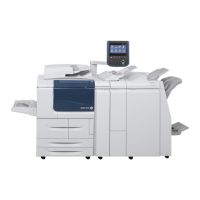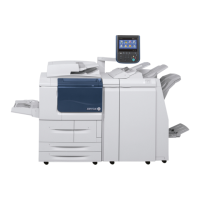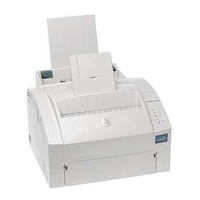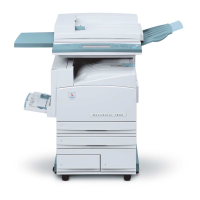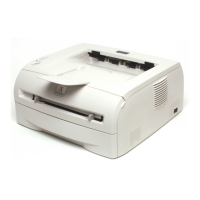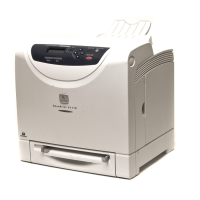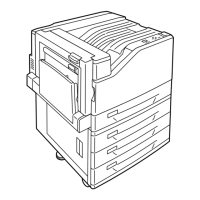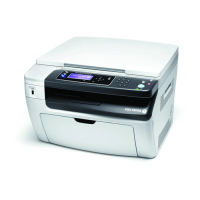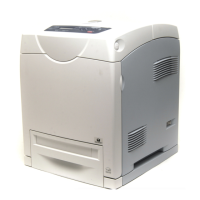What to do if Tray 5 (Bypass) printing failed on my Xerox Copier?
- SStephen RoseSep 1, 2025
If the Tray 5 (Bypass) printing failed on your Xerox Copier, follow the instructions displayed to load paper of the correct size and try printing again.
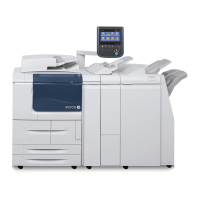








What to do if Tray 5 (Bypass) printing failed on my Xerox Copier?
If the Tray 5 (Bypass) printing failed on your Xerox Copier, follow the instructions displayed to load paper of the correct size and try printing again.
What to do if Tray 5 (Bypass) printing failed on Xerox Printer?
If printing from Tray 5 (Bypass) fails, follow the displayed instructions to load the correct paper size and try printing again.
Why do documents jam often in my Xerox Copier?
If documents jam often in your Xerox Copier, make sure the document feeder is loaded properly with acceptable media. Remove any sticky labels, paper clips, or tape from the documents. Properly set the document guides. Open the document feeder cover and check for pieces of paper. Set Mixed Size Originals to ON. Load the A5-size document vertically.
How to adjust the Xerox Copier if copies are not made at the desired size?
If copies from your Xerox Copier are not made at the desired size, clean the document feeder glass or the document cover. Place the document on the document glass with a white sheet of paper on top before copying. Ensure the document is loaded correctly, the document guides are properly set, and the document is straightened. Also, enter the correct document size.
What to do if a corner of the document is folded in Xerox D110?
If a corner of the document is folded, flatten out the curl and load the document again.
What to do if a corner of the document is folded in my Xerox Copier?
If a corner of the document is folded when using your Xerox Copier, flatten out the curl and load the document again.
What to do if a corner of the Xerox Copier document is folded?
If a corner of your document is folded when using the Xerox Copier, flatten out the curl and load the document again.
What to do if Xerox D110 online indicator does not light?
If the online indicator doesn't light up when you try to print, turn the power off, unplug the power cord, and check the interface cable connection. Also, check the print driver and environment settings on your computer.
Why is my Xerox D110 unable to print or copy?
If you're unable to print or copy, first follow any instructions displayed on the printer's screen. Next, press the Machine Status button and select Online from the Printer Mode. If the issue persists, turn the power switch off, firmly plug in the power cord, and then turn the power switch back on.
How to turn on Xerox Printer if power is not switched on?
If the power is not on, first, ensure the power switch is turned on. If it still doesn't power on, turn the power switch off, then firmly plug in the power cord before turning the power switch back on. Also, confirm that the power supply is within the range of 200-240 V and 15 A, and that the power capacity is compatible with the printer's maximum power consumption of 2.8-3.1 KVA.
| Print Speed | Up to 110 ppm |
|---|---|
| Print Resolution | 2400 x 2400 dpi |
| Duplex Printing | Yes |
| Supported Operating Systems | Windows, macOS, Linux |
| Standard Paper Size | A4, A5, B5 |
| Connectivity | Ethernet, USB 2.0 |
| Media Types | Paper, Envelopes, Labels, Transparencies, cardstock |
| Printer Type | Monochrome Laser |
Details the main physical parts of the machine, including feeders and trays.
Explains the Duplex Automatic Document Feeder (DADF) and its usage tips.
Explains the control panel and touch screen interface for machine operation.
Covers power-on, power-off, and energy saver modes for the machine.
Introduces optional feeding and finishing devices like feeders, stackers, and binders.
Information on accessing manuals via CD/DVD and the Xerox website.
Instructions for loading paper, tab stock, and transparencies into standard trays.
Guidance on loading media into optional feeding and finishing devices.
Steps for performing basic copies using the document feeder or glass.
Details on various copy settings like reduce/enlarge, paper supply, and image quality.
Explains features like book copying, edge erase, image shift, and rotation.
Covers options like booklet creation, perfect binding, covers, and page layout.
Describes building complex jobs, sample jobs, and saving programs.
Steps for loading documents, selecting features, and saving scanned data.
Covers resolution, color, paper orientation, and scan presets.
Details on scanning to PC, folders, USB, and network locations.
Instructions for scanning documents and sending them via email.
Procedures for selecting folders, checking, deleting, and copying/moving files.
Covers options like separators, covers, watermarks, and job flow configuration.
How to create, link, and manage job flow sheets.
Manual job flow execution, filtering by authorization and target options.
Steps for saving, deleting, renaming, and assigning icons to stored programs.
How to execute a stored program for copy jobs and build jobs.
Explains the Media Print feature and supported file formats.
Instructions for inserting USB devices and setting print options.
How to access web applications via the machine's Services Home window.
Details on printing via PS and PCL drivers, including tab printing.
Sending emails to the machine for printing and importing scan data.
Configuring display methods and import methods for network scans.
Checking active, completed jobs and managing them.
Details on secure print, sample set, delayed print, and charge print.
Details on machine status, configuration, serial number, software, and reports.
Information on current faults, messages, history, and supplies status.
Accessing billing details, usage counters, and tools like stored programming.
Instructions for cleaning the machine exterior, document glass, and rollers.
Ordering, checking status, and replacing toner cartridge and waste container.
Comprehensive guide to clearing paper jams in various machine locations.
Lists common fault codes, their causes, and remedies.
Solutions for basic machine troubleshooting, copy, and print problems.
Solutions for common problems encountered during scanning operations.
Technical details for copy functions across different models (D95, D110/D125, D136).
Technical details for print drivers, emulation, and scan features.
Technical details for the Duplex Automatic Document Feeder.
Instructions for loading paper, tabs, and transparencies into the HCF.
Guidance on clearing jams and understanding HCF fault codes.
Technical specifications for the High Capacity Feeder.
Instructions for installing and using the postcard bracket.
Guidance on loading various media types into the OHCF trays.
Covers clearing jams, fault codes, and technical specifications for OHCF.
Details on the module's control panel, paper path, and curl settings.
Instructions for clearing jams and understanding fault codes for the module.
Describes the HCS components, control panel, and top tray functions.
Steps for safely unloading the stacker tray and removing paper.
Guidance on clearing jams, general problems, and interpreting HCS fault codes.
Technical specifications and paper guidelines for the High Capacity Stacker.
Details external/internal components, control panel, circuit breaker, and paper paths.
Covers power modes, loading media, using modes, and cleaning the binder.
Instructions for clearing jams, fault codes, and binder specifications.
Identifies components and explains decurling and folding features.
Instructions for loading paper/tabs and replacing consumables.
Guidance on clearing paper jams, stapler faults, and understanding fault codes.
Details specifications for the finisher, optional folder, and transport.
Explains the module's function, main components, and paper path.
Details square fold options, trimmer options, and hints for booklet output.
Procedures for clearing jams and understanding fault codes.
Provides specifications for paper size and trim capacity.
Describes the finisher's role, modules, and main components.
Explains folding features, loading paper/tabs, and consumable replacement.
Guidance on clearing paper jams, stapler faults, and interpreting fault codes.
Details specifications for the finisher module, transport, and optional folder.
